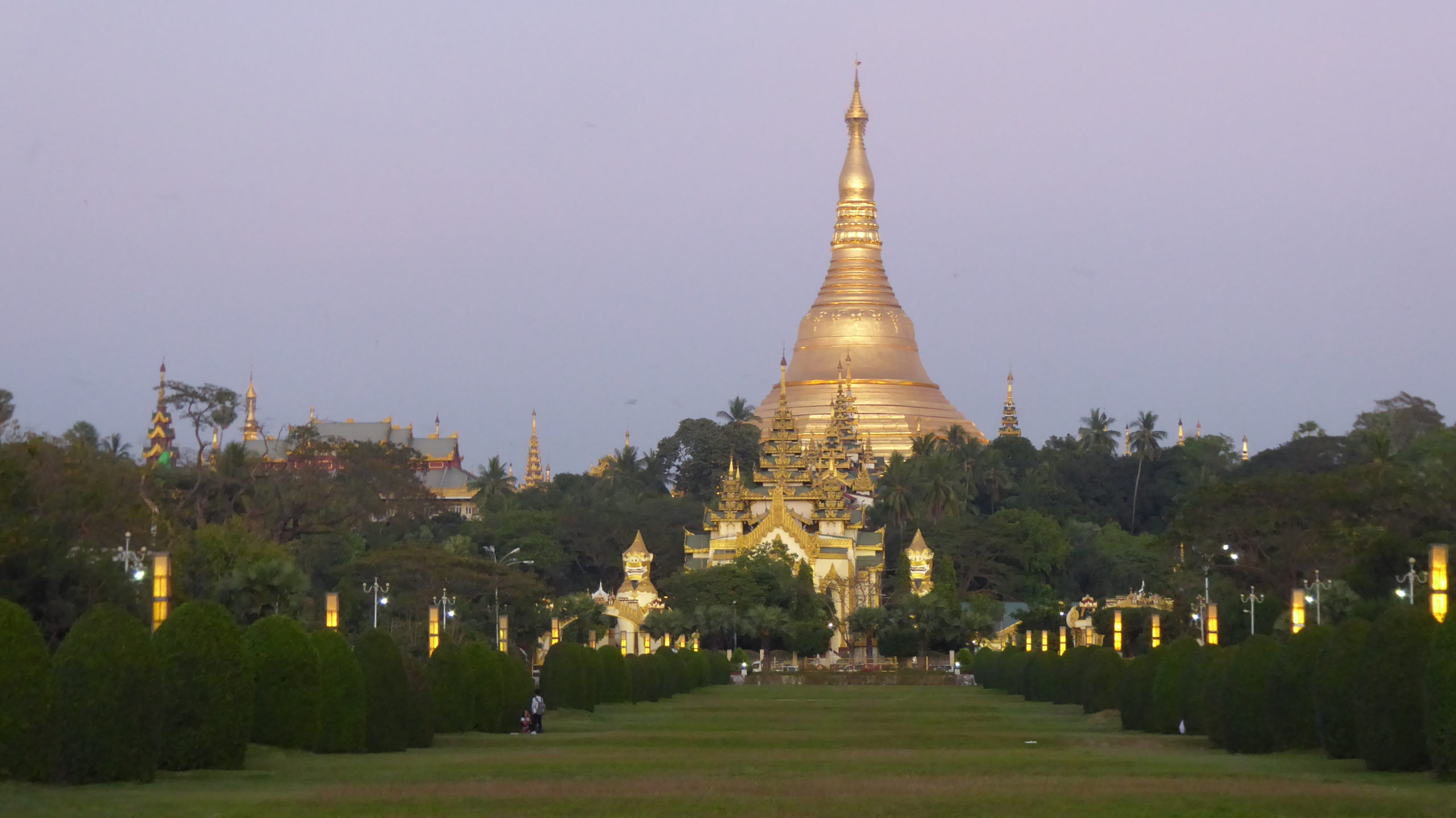Yangon served as our introduction to Myanmar, a truly unique country rich in culture. There were many local customs we had never come across anywhere else before, such as the longyi (wrap around sheet trousers worn by the majority of local men, resembling a long skirt) and Betel chewing as a substitute for smoking (which in itself isn’t too unusual, but once finished the user would spit out a large glob, permanently staining the streets a deep red).
We arrived in the early evening and from the plane, dozens of sparkling golden pagodas were visible as we came in to land, dotted at various points within the city centre and along dirt roads beyond. Once we had reached our accommodation, we ate dinner at the hotel’s top floor restaurant, from which we had an unobstructed view straight across to the most important religious site in the country, Shwedagon Pagoda. As a point of reference, dinner for two came to around £5.
Botataung Pagoda
It was only natural then, that we would visit a pagoda as our first attraction; specifically Botataung Pagoda. Unlike the temples in Malaysia, which you could normally skirt around wearing shoes without actually entering the sacred areas, at Burmese pagodas it was mandatory that all footwear be removed before entering the grounds. Shorts were not permitted either and this was strictly enforced on both men and women (again unlike Malaysia where knee length shorts were considered modest enough). Thankfully we had done our research, so we stopped by a market in advance to suitably equip our wardrobe with stylish trousers for pagoda visits.
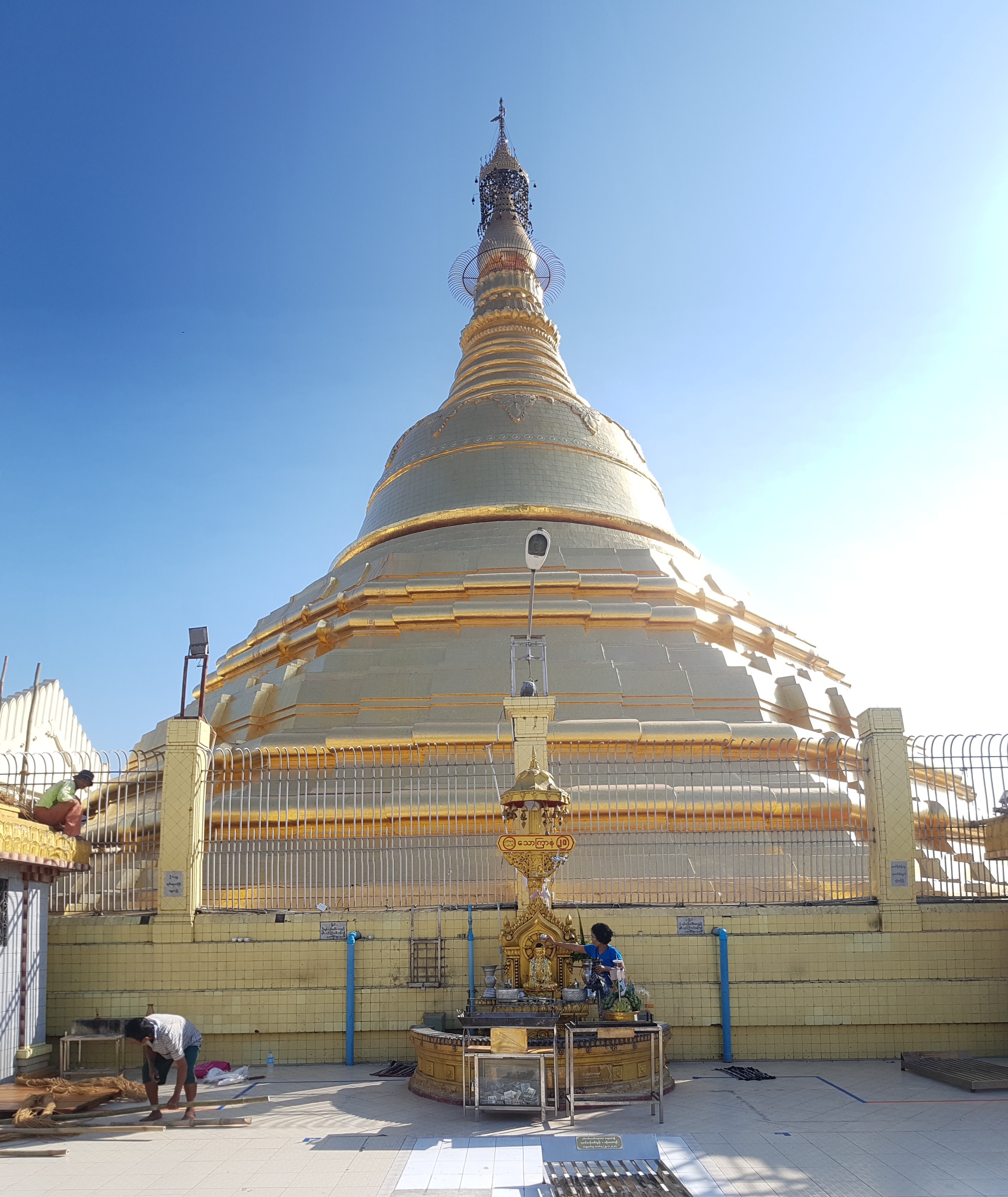
Once inside Botataung pagoda, a local Buddhist took us under his wing to teach us about the different relics and rituals. He explained that in the Buddhist faith, the day on which you were born is very significant. So much so that there are different shrines for each day of the week, located at different compass points around the pagoda in the direction associated with good fortune for that particular day. Both of us are born on a Monday, which means East is our lucky direction, the tiger is our spirit animal and we are ruled by the moon.

After leaving the pagoda we returned to the city centre for dinner. The centre was bustling at this hour and market stalls lined many of the side streets. On the way to our chosen diner we also passed the enormous town hall.

Shwedagon Pagoda
We headed for the famous Shwedagon Pagoda to watch the sunset after dinner. Immediately as we entered, we could tell this was a special and very sacred place to the Burmese people.

Following our teachings from the previous pagoda, we found the Monday shrine and bathed the Buddha (and our spirit animal) five times. As we had been taught, ‘five’ represents the number of important figures within Buddhism, and can also be applied to Christianity:
1. Lord Buddha (Jesus)
2. Dhamma (the Bible)
3. Monks (Bishop)
4. Parents
5. Teachers

Shwedagon Pagoda is 100m tall and estimates have it that somewhere between 10 and 60 tonnes of gold have been used in the various periods of its construction, which according to legend began over 2,600 years ago (although it did not reach its current height until it was repaired following an earthquake in the 18th century).

As might be expected, there were many monks to be seen worshipping around the pagoda. In Myanmar it is seemingly very common to become a monk, although not as a lifelong commitment. Many become monks for only a few weeks, as was the case for a local guide we overheard explaining the practice to some other visitors. Which explains why some monks could be seen taking selfies with the pagoda! However, don’t let that detract from the serenity and sanctity, there were a significant number to be seen worshipping as well.
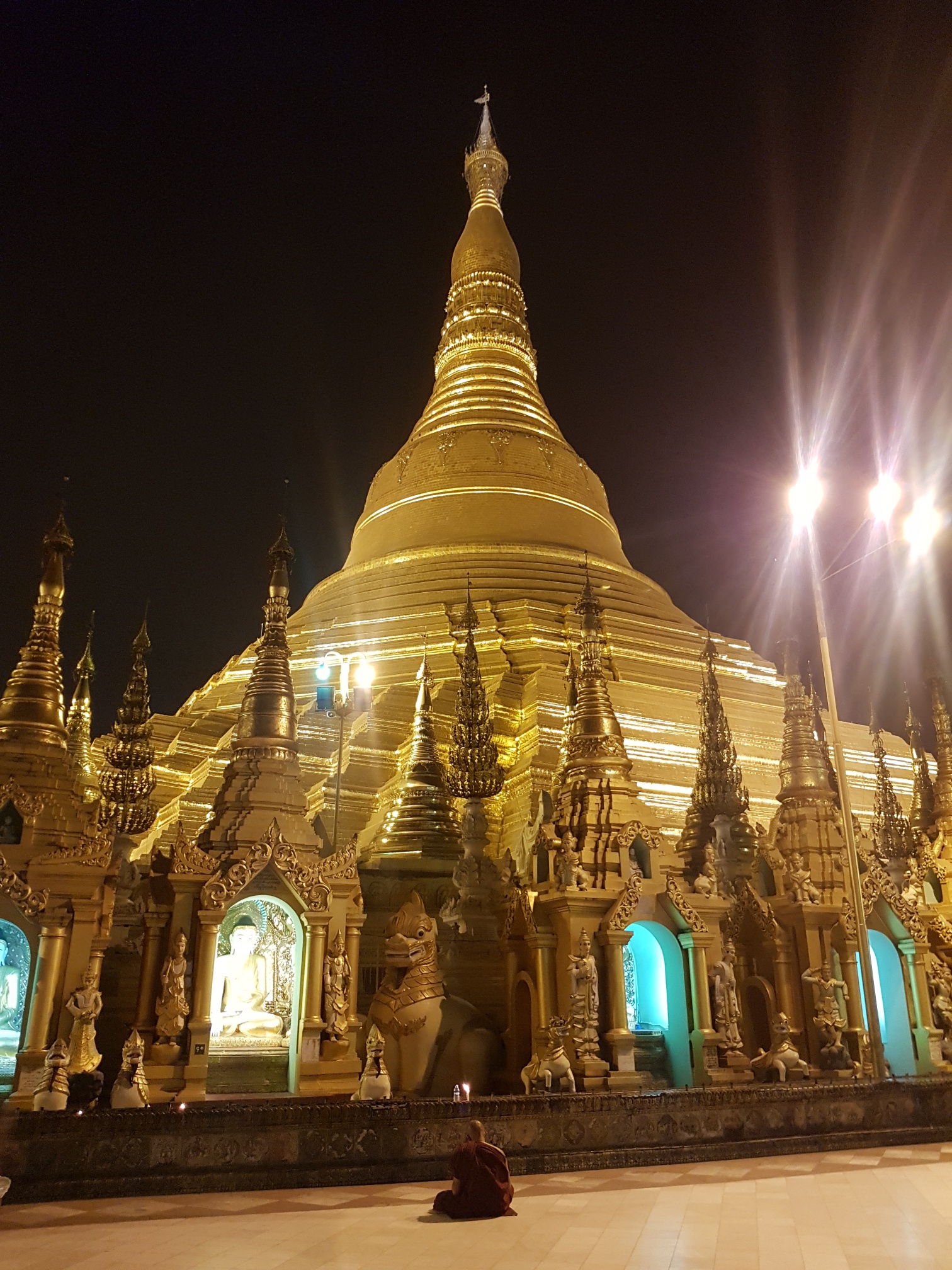
Once the sun had completely set, we spent a further hour or so just taking it all in. Honestly we could have stayed there all night – it was such a tranquil and mesmerising place.
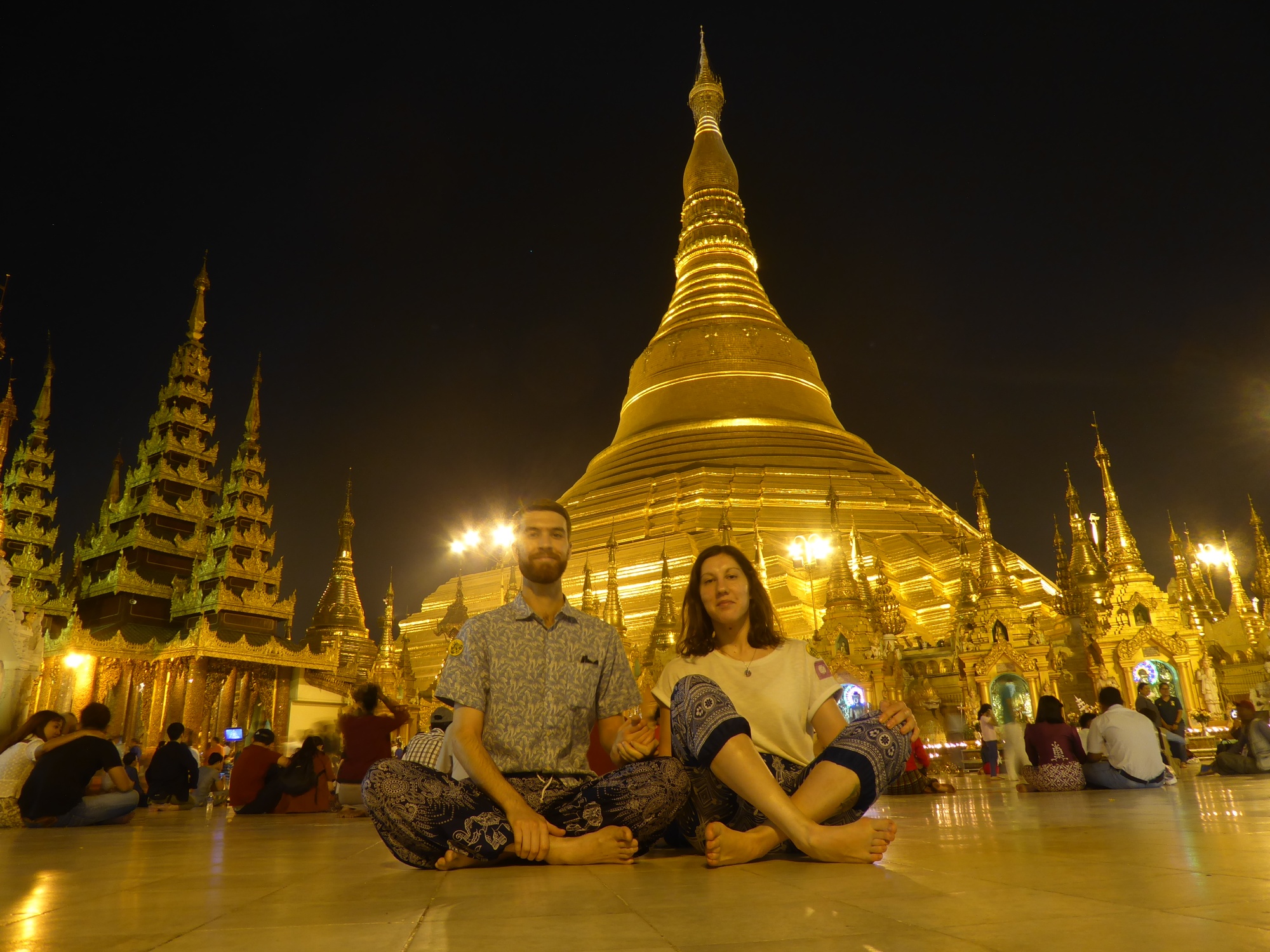
Floating Pagoda
Our first port of call the next day was the local park, from which Karaweik Palace “floating pagoda” could be seen.
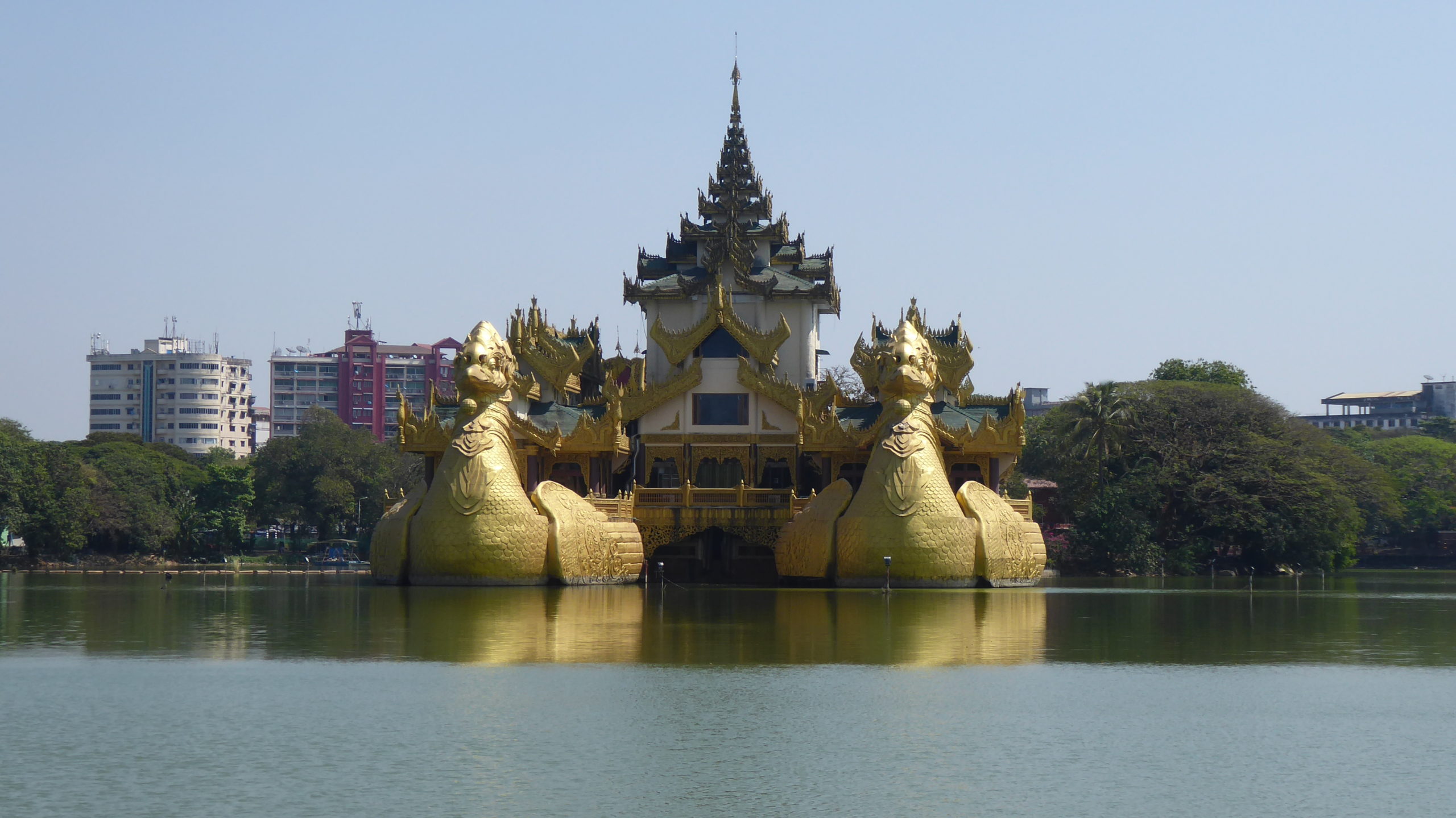
Central Station – Circular Train
Next we visited the Central Train Station, which had originally been built during British Colonial times. It has since been destroyed and rebuilt, but looking at it now it definitely appears to be in need of some refurbishment.
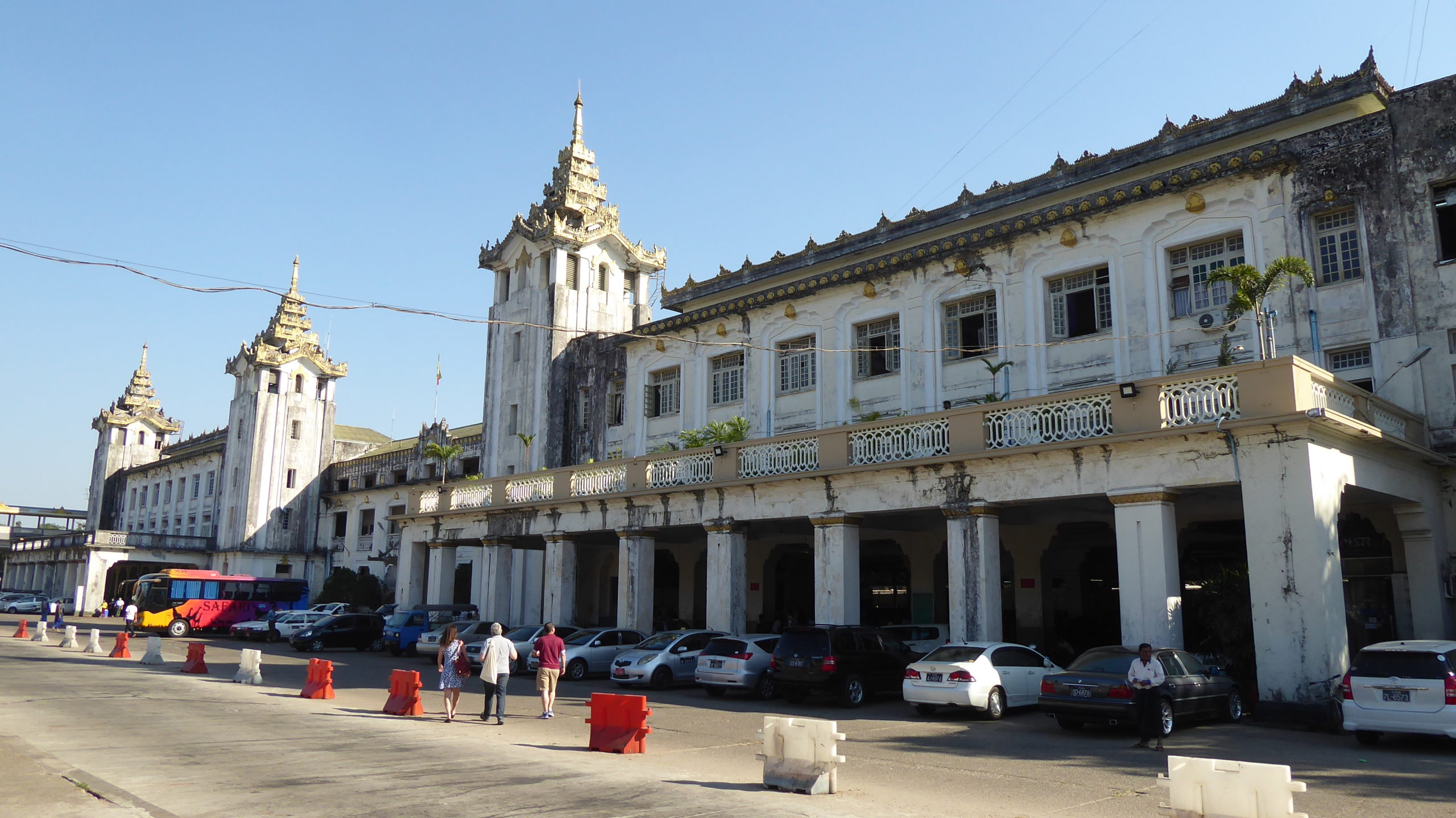
One of the recommended ways to see Yangon from a local’s perspective is to take a ride on the Circular Train, which is generally used by commuters. Tickets cost 200 Kyat (about 10 pence) and the trains run every hour.
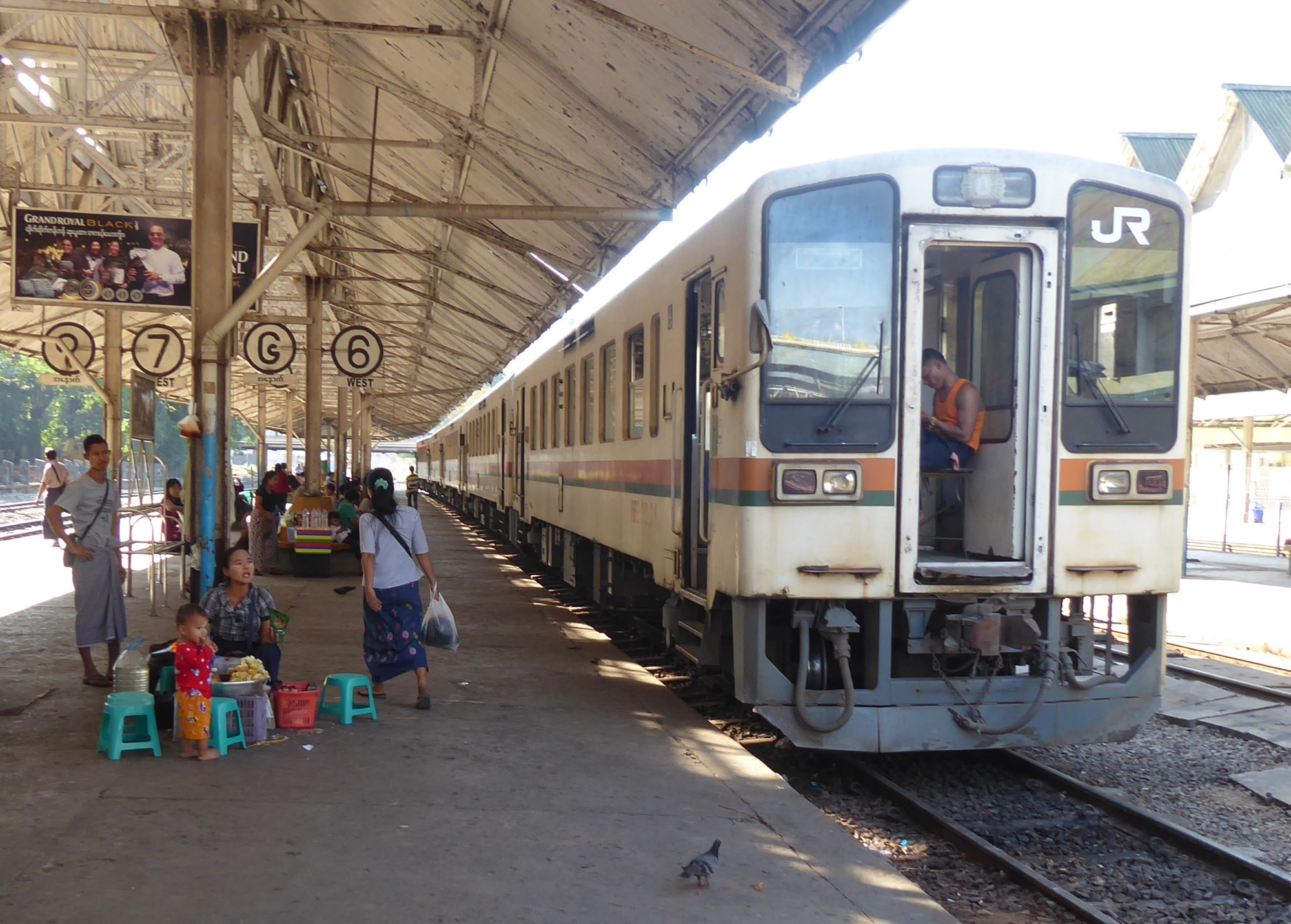
Unfortunately, due to the time we arrived, the service we got on was very busy as it was approaching the evening rush hour. But we weren’t deterred: determined to see the real Yangon, we boarded regardless. The train itself can best be compared to a very old, much slower London Underground. It was a bit more spacious, but that was the layout in terms of seating and rungs to hold on to. Of course there was no trolley service or toilets, but a fair few market vendors were aboard, walking up and down the length of the train selling various fruits, pastries, boiled eggs, water and mobile phone related gadgets.
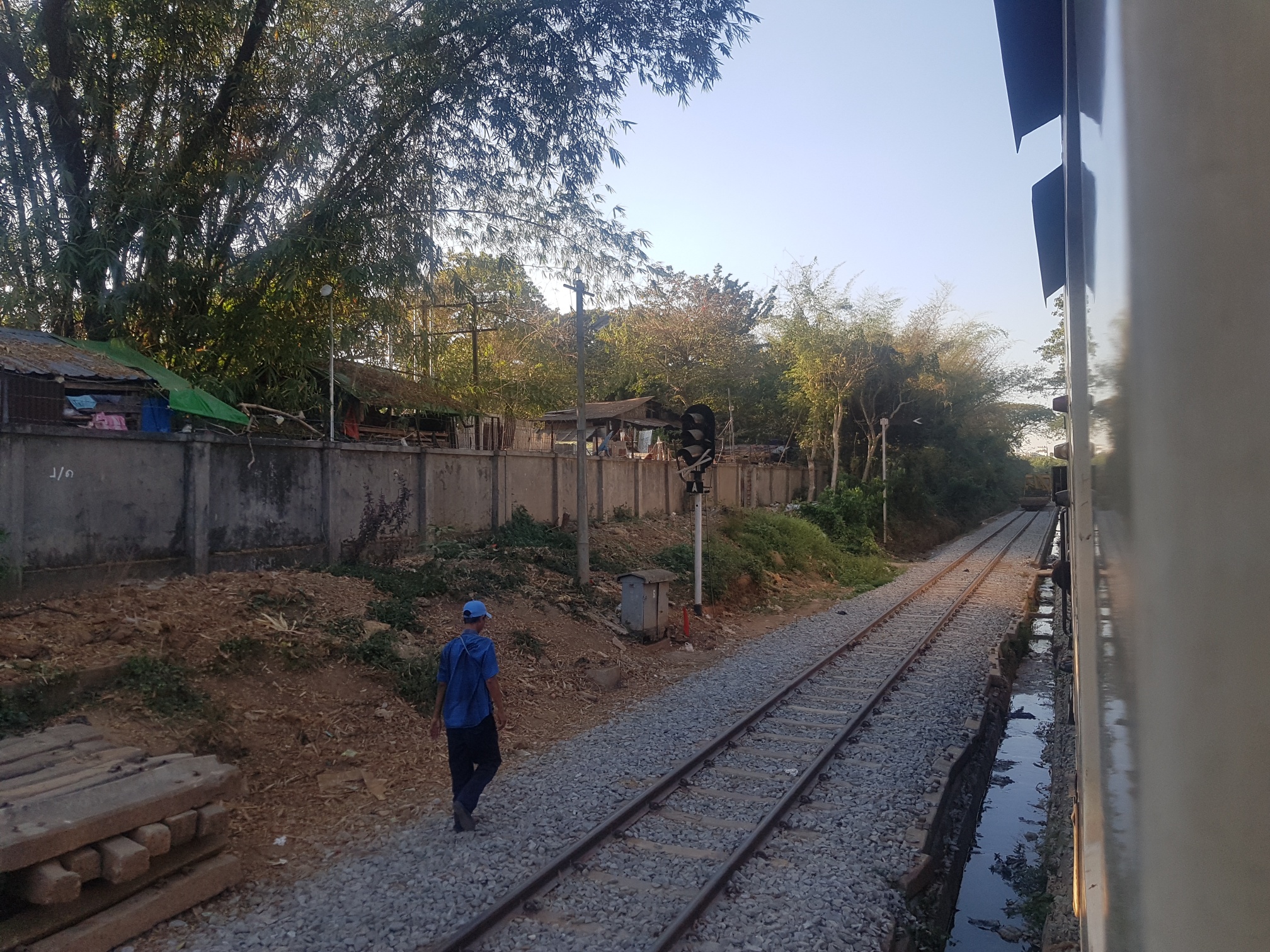
The train got busier and busier as we passed each station, so after a few stops we decided to get off early rather than do the full journey. We noticed we were the only Westerners in our carriage and as we weren’t using the train for its true purpose, we didn’t want to be an annoyance by taking seats away from the commuters who relied on the Circular train day in day out. As we disembarked and the train departed we were bid farewell!

On the plus side, leaving the train early did give us a new area of the city to explore. The local children seemed to enjoy our presence – we’re fairly sure we became part of their game as they ran past us several times in good spirits. Despite English not being commonly spoken in the country, a surprising number of locals enjoyed saying hello and offering a smile as they walked past.
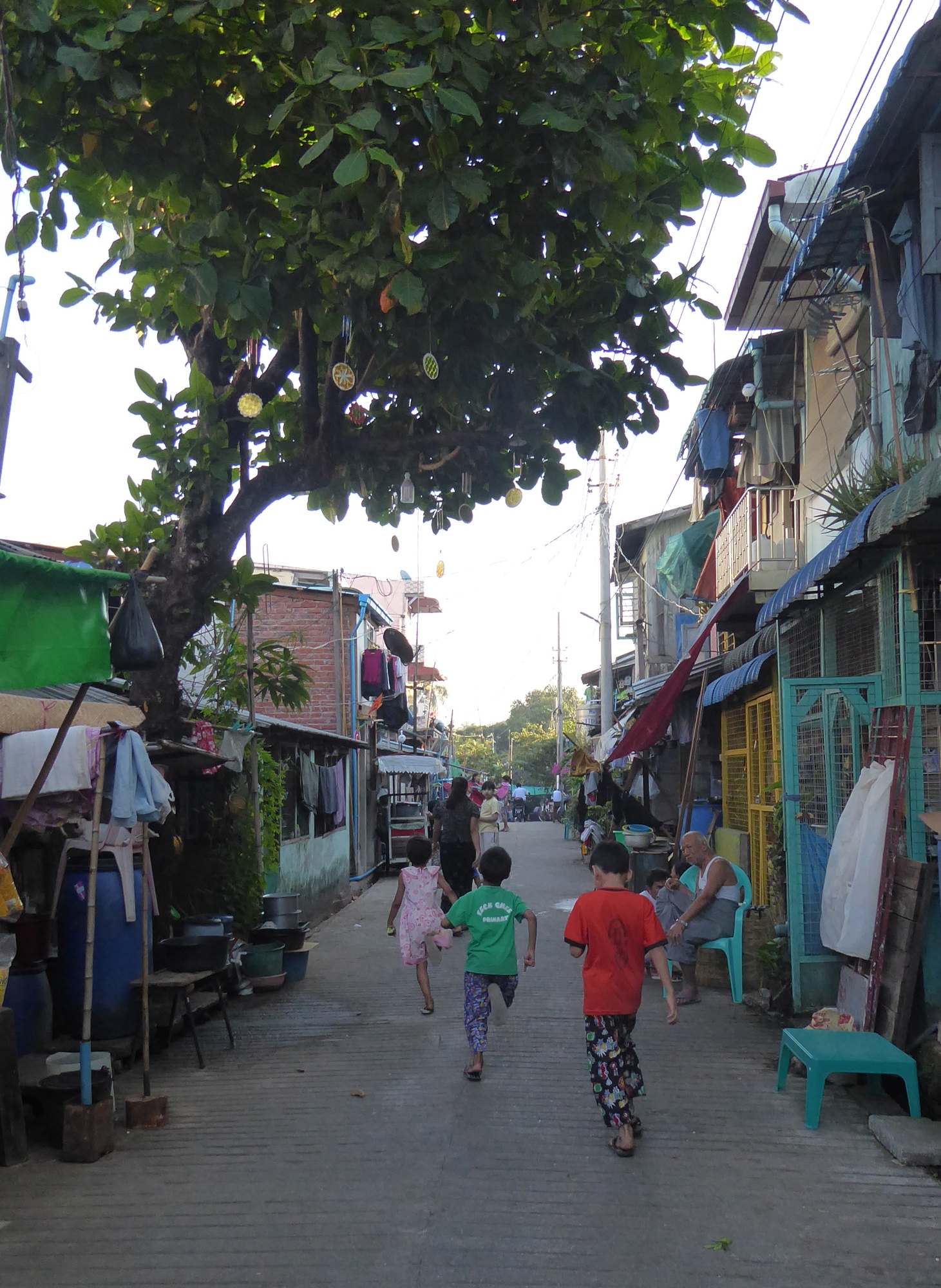
People’s Park
Our final destination in Yangon was the People’s Park. Perhaps we didn’t take the best entrance but our initial impressions were not particularly great. There were locals in the park, but lining the paths were empty food stalls (which seemed to repeat every 5 stalls or so) and a grimy looking theme park, which had quite an abandoned look about it. As we continued walking though, the Southern part of the park was much nicer – with large grassy areas, views of Shwedagon Pagoda and a musical fountain. We weren’t much for the music, but the fountain looked lovely in the sunset.

Yangon has been a thoroughly enjoyable first stop and has definitely sparked our interest to continue and explore Myanmar over the next couple of weeks.

